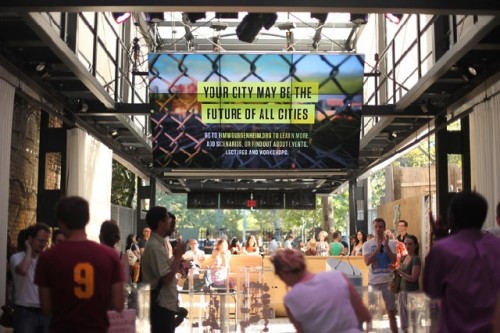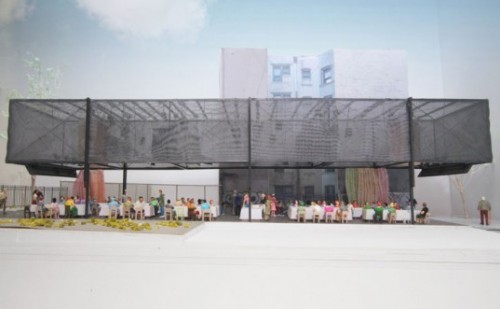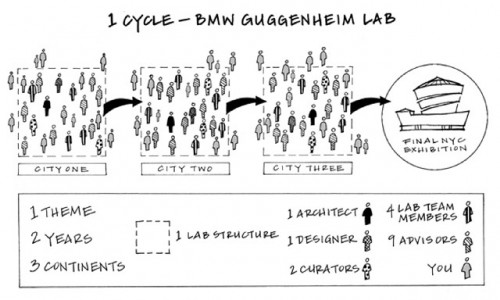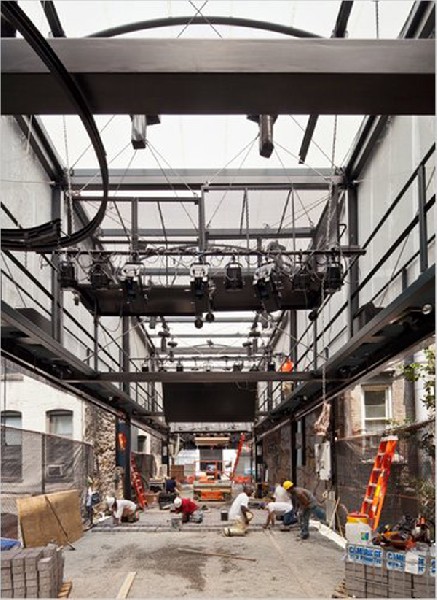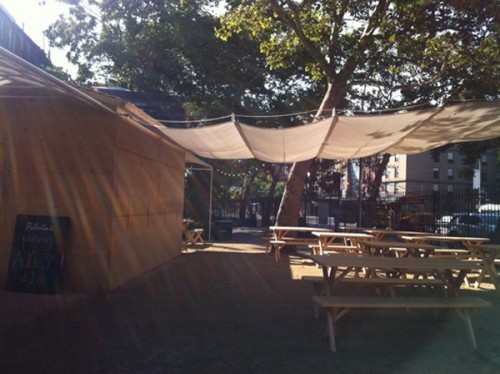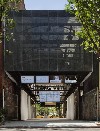The BMW Guggenheim Lab
Why A Mobile Urban Laboratory Traveling to Major Cities?
By: Mark Favermann - Aug 15, 2011
During the last few decades of the 20th Century and the first decade of the 21st Century, the urban dialogue or the civic conversation has been the rule rather than the exception.
Public discourse on topics ranging from public safety to education to transportation to housing to sustainability and to accessibility have enlightened and focused politicians, government bureaucrats, urban designers and city planners.
At least this has been true in most democratic countries.
Transparency in process and implementation has been a major desired objective. However, the will of the people, the citizens' needs and desires, has certainly not always been the outcome.
Often the public forums have been little more than release valves for pent up anger or lack of previous public expression opportunity. Economic restraints and conflicting agendas do not necessarily result in Solomonic decisions either. Political and often economic expediency rule.
But now comes a collaboration between BMW and the Guggenheim Foundation and Mueum that suggests that they can do even better with a new urban issue vehicle, the global BMW Guggenheim Lab.
Set on a vacant lot between two tenements, on the border of New York City's urban textured Lower East Side and the Bowery, the first of the planned Labs occupies a narrow, block-through 75 year old parcel enhanced by a public garden space along gritty Houston Street and 2nd Avenue.
Conceptualized as part urban think tank, part community center and part public gathering space/public forum, the Lab is set up to inspire public dialogue in cities around the world and through the BMW Guggenheim Lab website and online social network communities.
However, the BMW Guggenheim Lab seems all about process. It appears to lack any thoughtful implementation mechanism.
After New York, the nine city tour will initially include Berlin and Mumbai. Eventually there will be three lab structures, each with its own mobile temporary "building" designed by a different architectural firm. Each three city grouping will deal with a separate theme involving urban life. The first theme is “Confronting Comfort,” both private and public.
At best, this project is urban theatre. So it makes sense that the first structure by Atelier Bow-Wow of Tokyo is like a large open air theatrical stage configuration. Nicknamed the "traveling toolbox," it is a completely self-contained, collapsible environment that can be shipped anywhere in the world and reassembled.
This initial structure’s lower half is a contemporary adaptation of the Mediterranean loggia, an open space that can easily be configured to accommodate the Lab’s various programs. The upper part of the structure houses a flexible, carbon fiber rigging system and is wrapped in a semitransparent mesh.
Seen through its external "skin," the visible rigging is designed to transform the ground space into a formal lecture setting, a stage for a celebratory gathering, or a workshop with chairs and tables for literal hands-on experiments.
A series of temporary pop-up smaller wooden shelters set adjacent to the main structure provide space for restrooms and a cafe. The canvas enhanced wood structures are non-descript, bland and look and feel quite temporary while the main structure has a more permanent and 21st Century futuristic quality. The combination of both parts of the physical ensemble are to visibly reflect changing streetscapes in a vibrant urban neighborhood.
In conjunction with the installation, the Lab has launched a new website on which individuals can post their own suggestions for ways to make New York more comfortable. Already, the ideas have ranged from the near sublime to the utterly ridiculous, accesible sidewalks to giving everyone an ice cream cone. When the Lab closes in October, there will be left an accessible public park where the empty lot once stood.
Perhaps over optimistically and rather niavely, the curators envision the project as an innovative mobile "laboratory" bringing this dialogue to the street level. They see the structure as a place that is an invaluable platform for interaction and discussion between citizens, design and planning professionals, educators, and administrators. This is pretty ordinary thinking about a community of conversation.
Besides exploring notions of individual and collective comfort, the overarching institutional concern is for a focus upon urgent need for environmental and social responsibility. This will supposedly connect both BMW and the Guggenheim to environmental and social responsibility.
Thus, a transportation corporation and art institution will be eventually identified by their involvement in environment and social good. The project seems to be great marketing if not great or even very important urban design.
The curators have lost a sense of history as well. During the 1970s, community based, often street level, architecture and planning studios flourished around the US. Usually sponsored by universities, nonprofits or foundations, they embraced community participation. Neighborhood councils, community development corporations and greater citizen awareness/sophistication came out of these. With the exception of new technologies (Social Networking), what is so very different about the BMW Gugenheim Lab objectives than what was done nearly 40 years ago?
Somehow the activities of the Lab will explore how a city can be more responsive to people's needs, better than already sophisticated ways already in use by other urban professionals working throughout the world. The curators rather unsophisticated "hope" is that the information gathered and lessons learned at the Lab will eventually benefit cities across the globe. What mandates for change and allocated resources will be directed at the outcomes? What will bridge hope and reality?
Most critics and members of the press are giving this project a pass. They have saluted something new being built even temporarily by the Guggenheim. Like Mickey and Judy used to say, "Let's put on a show!" The brand expansion and worldwide visibility by both BMW and the Guggenheim seems to be the real urban outcome that will actually result.
But what is the need for this vehicle? Why now? And other than a rather academic outcome, will there be any tangible ideas and real results coming from it?
Over ten weeks, the space will host 100 free events. The curators say that the Lab is "designed to spark curiosity and interaction." What about creating unrealistic expectations? The program includes public talks by leading architects, innovators and entrepreneurs.
"Urbanology," a live role-play game will enlist local residents as catalysts for change in education, housing and health care. Somehow this game's outcomes are thought to literally meet the specific needs of paricipants' communities. Utopian or just silly? Is this just a latest version of the planning computer game SIM City? What's so innovative about that?
During the six years of the Lab, the depth and breath of the program is to be entirely available on the BMW Guggenheim Lab website, and will be covered on its dedicated blog as well as on major social networks.
Social networking in regard to local community issues? This appears to be a double edge sword. Will there be filters for political radicalism, propaganda or slanderous criticism? Tweeting, texting and emailing sound fine as social networking tools, but what if crowd sourcing is darkly driven to violent political protests, gang turf fights or neighborhood destructive riots? Social networking already seems to have had some connection to the recent London and other UK city riots.
Adding to the urban dialogue may be interesting, but what then? The BMW Guggenheim Lab appears to be a vehical for ideas without a real destination or even with much of a road to get anywhere.



